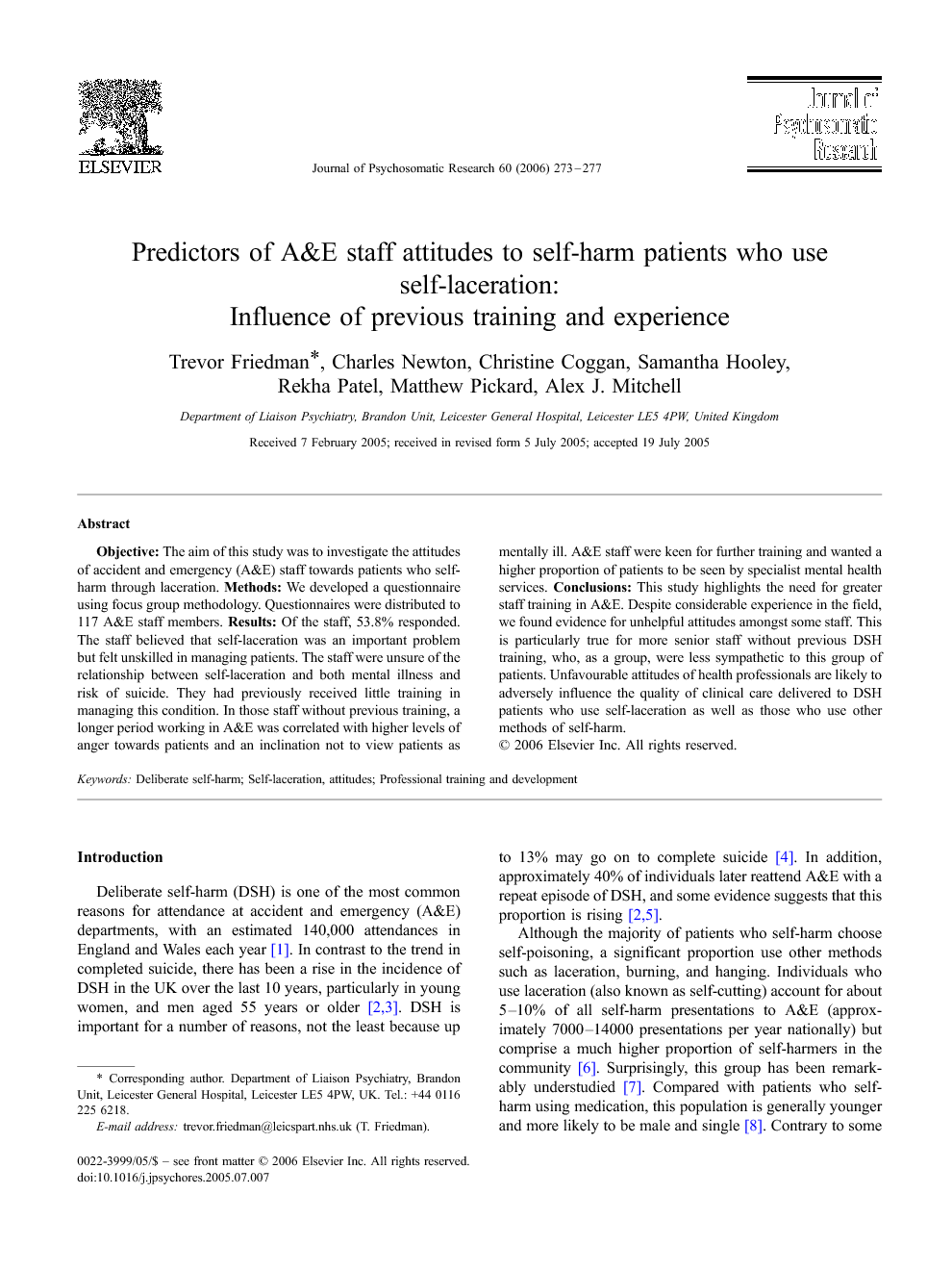ترجمه فارسی عنوان مقاله
انگیختگی ادراکی ایجاد حافظه های جدید اپیزودیک را بهبود می بخشد
عنوان انگلیسی
Predictors of A&E staff attitudes to self-harm patients who use self-laceration: Influence of previous training and experience
| کد مقاله | سال انتشار | تعداد صفحات مقاله انگلیسی |
|---|---|---|
| 35471 | 2006 | 5 صفحه PDF |
منبع

Publisher : Elsevier - Science Direct (الزویر - ساینس دایرکت)
Journal : Journal of Psychosomatic Research, Volume 60, Issue 3, March 2006, Pages 273–277

